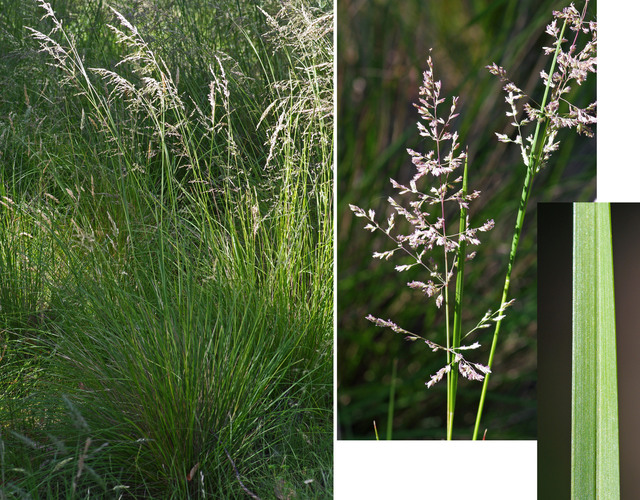
Common Tussock Grass
Poa labillardierei var. labillardieri
Large dense perennial tussock to 80 cm high, flowering stems to 1.5 m. Rough green or greyish-green flat to inrolled leaves to 80 cm, with pale green sheath. Much branched open seedheads to 25 cm made up of flattened groups of 3-4 green or purplish seedheads.
| Details | |
|---|---|
| Flora Type | Grasses |
| Other Common Names | Silver Tussock |
| Distinctive Features | Vigorous grass, very variable. Named after French botanist Jacques Julien Houtou de Labillardiere. |
| Biology | Perennial. River flats, plains, subalpine grassland, wet and dry forests. Various soils, damp to dry. |
| Native Status | Native |
| Flowering Time | Oct-Feb |
| Taxonomy | |
|---|---|
| Phylum | Tracheophyta (Vascular Plants) |
| Class | Magnoliopsida (Flowering Plants) |
| Order | Poales |
| Family | Poaceae |
| Genus | Poa |
| Species | labillardierei |
Probably the most common tussock-grass in Tas, occurring from sea-level to subalpine zone. Colour may change with seasons or age. The stem and leaves of some Poa species were used for making string by Aboriginal people. Important food source for birds and a range of insects.
| Interesting Facts | |
|---|---|
| Similar Species | When not flowering can be mistaken for the aggressive weed Serrated Tussock Nasella trichomota which is a yellowish-green colour. |
| Native Status | Native |